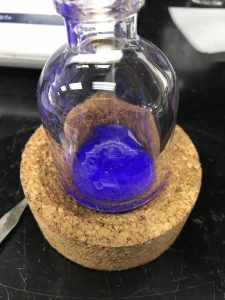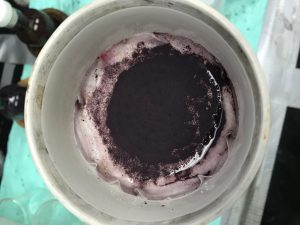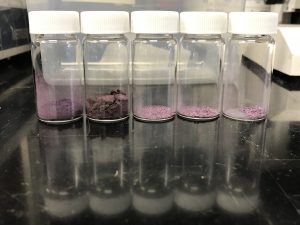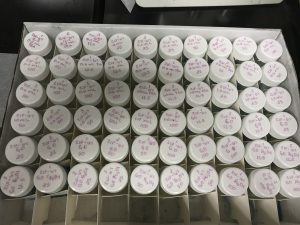Dear Diary,
It’s been a short week so this will probably a short post. As you know, FoMD (Fouling of Membrane Distillation) and I are still going strong. We’ve experimented every day this week! Last week I created the model of the materials that we should see using Visual MINTEQ. After having those two old programs fighting over me last week, I haven’t had to use either one this week.
This week I got another new toy scientific tool to use. And to be honest, Diary, if anything can steal me away from FoMD, it is this new tool. It is an Optical Coherence Tomography microscope (OCT) and it is used for microscopy. Microscopy is a sciency word (AKA fancy) for “the use of a microscope.” This one, however, is not like your high school biology microscopes. An OCT uses near-infrared light beams to reflect off of the object to create an image. But wait, it gets even cooler. The infrared beams can penetrate a lot of objects so it also creates 3D images. Below is a picture of the whole setup. The OCT is on the right and sitting below the lens is a USB flash drive. On the computer screen, you can see a picture of the flash drive in the bottom right with the letter Y clearly visible. The big image is the microscopic view of the flash drive (whitish blue, mostly hidden by the orange) with part of the letter Y (green) and a lot of noise created by the plastic (orange and pink at the top and bottom of the image). Each pixel created by the program is 1µm or about 1/20th the thickness of human hair and the different colors indicate different densities. I was told that I can put anything I want under OCT as encouragement to learn how to use OCT. I have to level with you, Diary, my first ideas went all the way back to the five-year-old me with “I should put boogers under the microscope!” Sometimes I’m proud that I’m not growing up…this was not one of those times.
OCT and I are going to have lots of fun together creating images of the membranes that FoMD and I are fowling up. The next image is a membrane that only had de-ionized water pass through it so there should be no fouling. This creates a nice standard of what a clean membrane will look like since we might find parts of other membranes that are clean. This image is showing a piece of the membrane that is less than 2mm by 2mm.
Here is a membrane that was in FoMD for nearly 48 hours and had a lot of salt build up or “fouling.” You can see that there is still a lot of clean membrane visible but there are also cool salt structures. Using another feature, bottom picture, we can start to see what pores became “wet” which is membrane distillation speak for “got contaminates in the pore so now liquid water can pass through the pore.” As you can see, “wet” is a much friendlier term. The wet pores have large downward cones visible in this side view image.
Guess what else, Diary? Next week I get to start putting these cells into other new toys scientific tools (I can’t believe I keep making that mistake) to determine what those solids are. I don’t remember what these toys’ names are but that helps make them more mysterious. The solisd should match the precipitates determined by the Visual MINTEQ program that I was using last week. One can only hope!
I guess this post wasn’t as short as I expected, oh well. Until next week, Diary – Chay





















